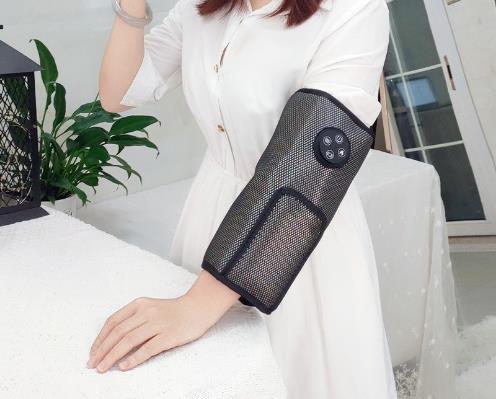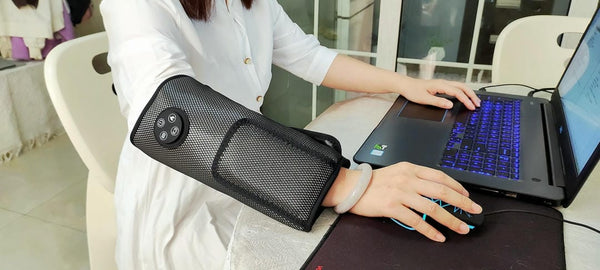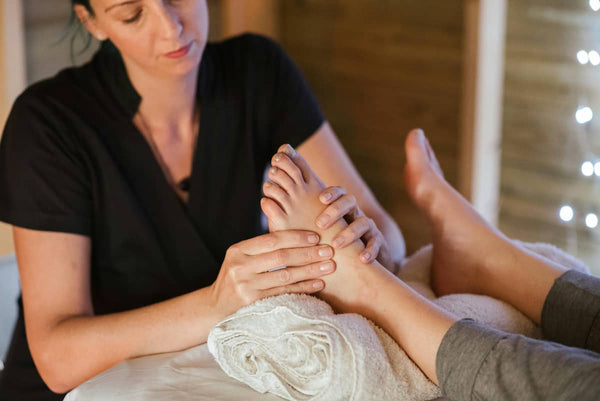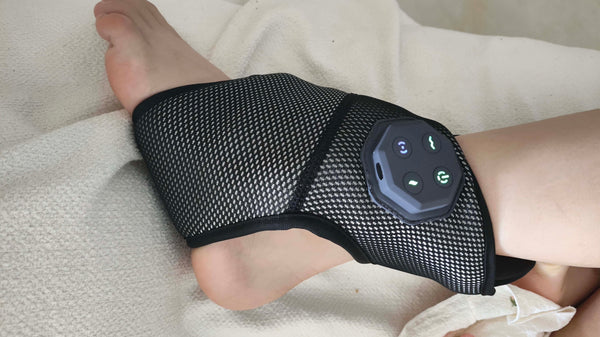
If you're an office worker dealing with scoliosis, you know the daily grind can be more than just mentally taxing—it can be physically painful. That persistent, nagging hip pain can feel relentless, and it’s completely understandable to feel desperate for a solution. You're not alone in this. The link between a curved spine and aching hips is very real, but navigating the options for relief can be confusing. Let's break down what's happening and explore the genuine, practical solutions available to you, from targeted exercises to helpful tools like a hip massager.
What's the Connection Between Scoliosis and Hip Pain?
First, let's get to the bottom of why you're hurting. Scoliosis creates an asymmetrical curve in your spine. Your body, being the clever machine it is, tries to compensate to keep you balanced and upright. This compensation often leads to a tilted pelvis. When your pelvis is out of alignment, it puts uneven stress on the muscles and joints in your hips and lower back. One side might have muscles that are overworked, tight, and sore, while the other side's muscles become weak and strained. This imbalance is a classic recipe for chronic hip pain, bursitis, and that awful ache in your backside, which is why simply treating the hip in isolation often doesn’t work.
Can Specialised Exercises Like the Schroth Method Help?
Absolutely. For many people with scoliosis, a proactive approach is the best long-term strategy. The Schroth Method is a specialised physical therapy program designed specifically for scoliosis. Instead of generic exercises, it uses customised movements to de-rotate and elongate the spine. The goal is to reduce the asymmetrical pressure by strengthening the weak muscles and stretching the tight ones. Many patients find this method incredibly empowering because it teaches you how to correct your posture and manage your condition, leading to a significant reduction in pain. It’s a commitment, but it targets the root cause of the problem.
What About Chiropractic Therapy? A Look at the Mixed Opinions
Seeing a chiro is a common thought for back and hip pain, and for some, it provides welcome, temporary relief. A chiropractor can perform adjustments to improve joint mobility and reduce stiffness. However, the feedback from the scoliosis community is mixed. While some report feeling better after a session, others have found the adjustments can increase pain, especially if the treatment isn't tailored to their specific spinal curve. It's not a one-size-fits-all solution, and it’s crucial to find a practitioner with proven experience in treating patients with scoliosis. For many, it's a piece of the puzzle, not the whole solution.
Supportive Care: Does Massage Help Hip Pain and What Tools Can I Use?
 This is a big one, and the answer is a definite yes. Massage is fantastic for managing the muscular side effects of scoliosis. Here’s how you can make it work for you:
This is a big one, and the answer is a definite yes. Massage is fantastic for managing the muscular side effects of scoliosis. Here’s how you can make it work for you:
- Targeted Muscle Relief: A good sciatica massage or hip-focused massage directly addresses the tight, overworked muscles in your glutes and hips that are screaming for relief. This is key for learning how to relieve buttock muscle pain.
- Using the Right Tools: You can achieve great results at home with the right device. A quality hip massager or buttocks massager can apply consistent pressure to release trigger points. This is far more effective than just rubbing the area.
- Reaching Deep Muscles: The psoas muscle, a deep hip flexor, is often a major culprit. Performing a psoas massage or a more general psoas major massage can be tricky, but it's essential for relieving the pelvic tilt that contributes to pain.
- Complementary Aids: While a good buttock massager does the heavy lifting, some people find extra comfort by using a muscle pain relief cream afterward to soothe the area. While a cream won't fix the underlying issue, the best cream for muscle pain can certainly help manage the day-to-day discomfort.
When All Else Fails: Is Surgery the Only Option?
For severe cases of scoliosis where the curve is progressing and pain is debilitating, surgery like spinal fusion may be recommended. This is always considered a last resort after non-invasive methods have been exhausted. It’s a major operation that involves permanently fusing vertebrae to correct the curve and stabilise the spine. While it’s a big decision with a significant recovery period, personal accounts from those with severe scoliosis often highlight it as a life-changing procedure that finally brought them effective, long-term relief from chronic pain.
Life After Surgery: Using Massage as a Gentle Aid
Recovery from spinal fusion is a long road, and reintroducing movement and therapy must be done carefully. Once your surgeon gives you the all-clear, gentle massage can be an excellent way to manage residual muscle stiffness and soreness. It's crucial that any tool you use is gentle and that you have your doctor's approval. For instance, a relatively gentle device like the KLCOSY hip and shoulder massager could be chosen as an auxiliary option for the soft tissues around the hips, but you absolutely must consult your specialist before using any massage tool post-operation. Never apply deep pressure or use a massager near the surgical site itself.
Frequently Asked Questions (FAQ)
- Does massage help hip pain?
- Yes, it is very effective. For pain stemming from scoliosis, massage helps by relaxing the tight, overworked muscles around the hip and in the buttocks. A good hip massager can release tension and trigger points, reducing the strain caused by pelvic imbalance.
- How do you massage the hip joint?
- It's important to clarify that you don't massage the bony joint itself. Instead, you focus on the dense muscles that surround and support it: the glutes (your buttock muscles), the TFL (a muscle on the side of your hip), and the hip flexors at the front. A good buttock massager is perfect for this job.
- How do you massage hip bursitis?
- With caution. Hip bursitis is an inflamed bursa (a fluid-filled sac). You should never apply direct, deep pressure to the most painful, inflamed spot, as this can make it worse. Instead, gently massage the surrounding muscles—the glutes and thigh muscles—to relieve the tension that is irritating the bursa. Always start gently and stop if the pain increases.




0 comments